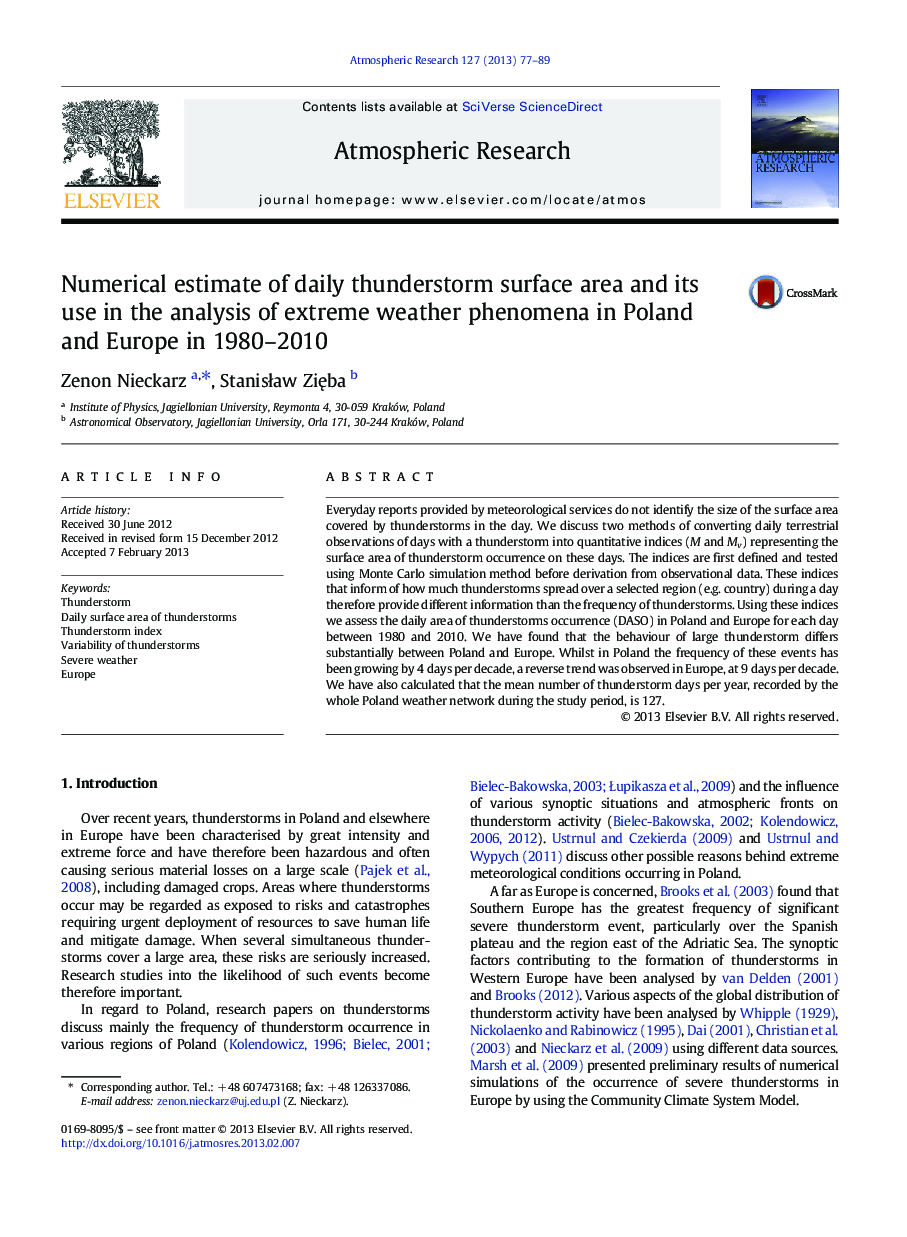| Article ID | Journal | Published Year | Pages | File Type |
|---|---|---|---|---|
| 4450043 | Atmospheric Research | 2013 | 13 Pages |
•Methods of converting thunderstorm observations into thunderstorm area are proposed.•The methods are tested using Monte Carlo simulations.•The behaviour of large thunderstorm differs between Poland and Europe in 1980-2010.
Everyday reports provided by meteorological services do not identify the size of the surface area covered by thunderstorms in the day. We discuss two methods of converting daily terrestrial observations of days with a thunderstorm into quantitative indices (M and Mv) representing the surface area of thunderstorm occurrence on these days. The indices are first defined and tested using Monte Carlo simulation method before derivation from observational data. These indices that inform of how much thunderstorms spread over a selected region (e.g. country) during a day therefore provide different information than the frequency of thunderstorms. Using these indices we assess the daily area of thunderstorms occurrence (DASO) in Poland and Europe for each day between 1980 and 2010. We have found that the behaviour of large thunderstorm differs substantially between Poland and Europe. Whilst in Poland the frequency of these events has been growing by 4 days per decade, a reverse trend was observed in Europe, at 9 days per decade. We have also calculated that the mean number of thunderstorm days per year, recorded by the whole Poland weather network during the study period, is 127.
